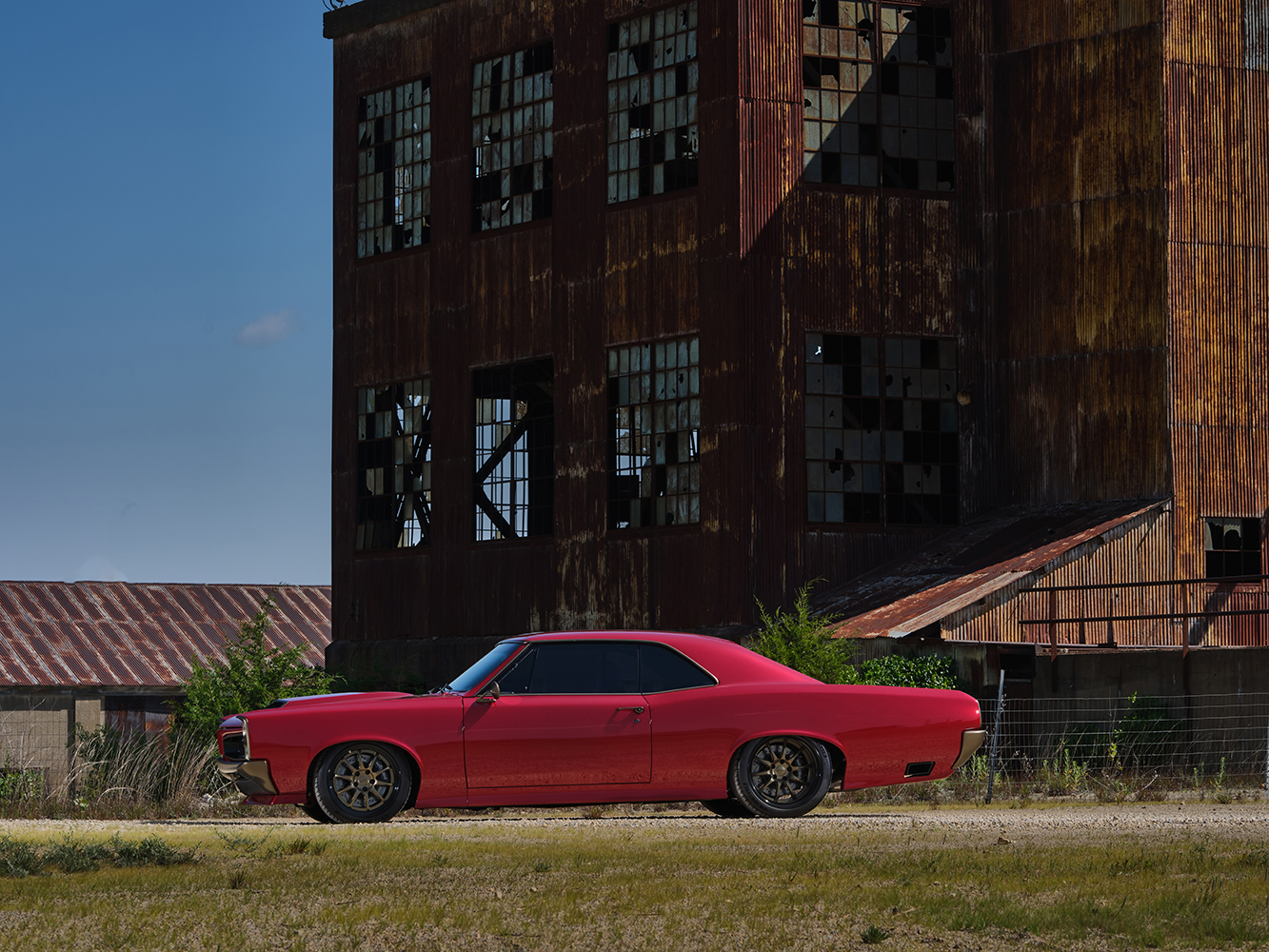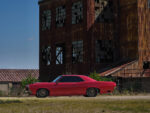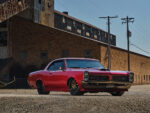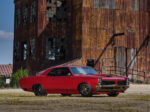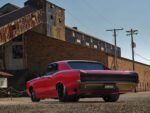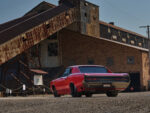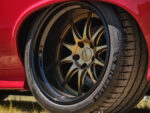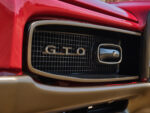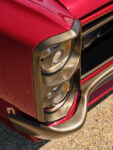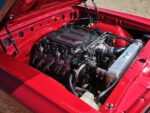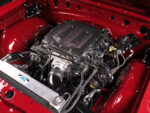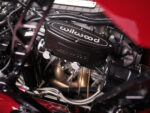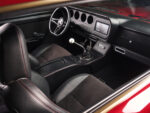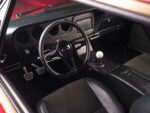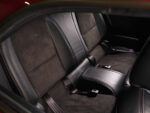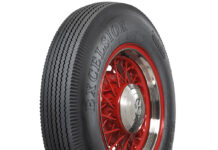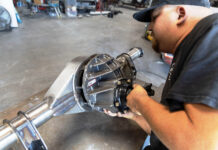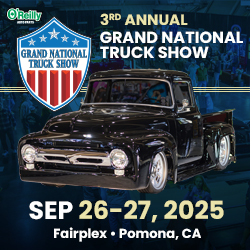By Brian Brennan – Photography By NotStock Photography
It was 1964 and you could feel that Detroit was searching for something to give to the growing segment of youth buyers who wanted more—more performance, more power, just more. That’s precisely what Russ Reiter’s 1966 Pontiac GTO is … more performance, power, and good looks, all brought about with significant expertise from Griffin Automotive Design (GAD).![]() A little about the beginnings of the Pontiac GTO, introduced in 1964. It was initially offered as an option package for the Pontiac Tempest, featuring a more powerful engine and performance-enhancing features. The GTO, or “Goat,” as often called, became its own distinct model in 1966. This shift helped solidify the GTO’s legacy and reputation in the automotive world, enabling it to stand out even more as a symbol of performance and style during the muscle car era. Its success helped define the muscle car era of the mid-1960s and beyond.
A little about the beginnings of the Pontiac GTO, introduced in 1964. It was initially offered as an option package for the Pontiac Tempest, featuring a more powerful engine and performance-enhancing features. The GTO, or “Goat,” as often called, became its own distinct model in 1966. This shift helped solidify the GTO’s legacy and reputation in the automotive world, enabling it to stand out even more as a symbol of performance and style during the muscle car era. Its success helped define the muscle car era of the mid-1960s and beyond.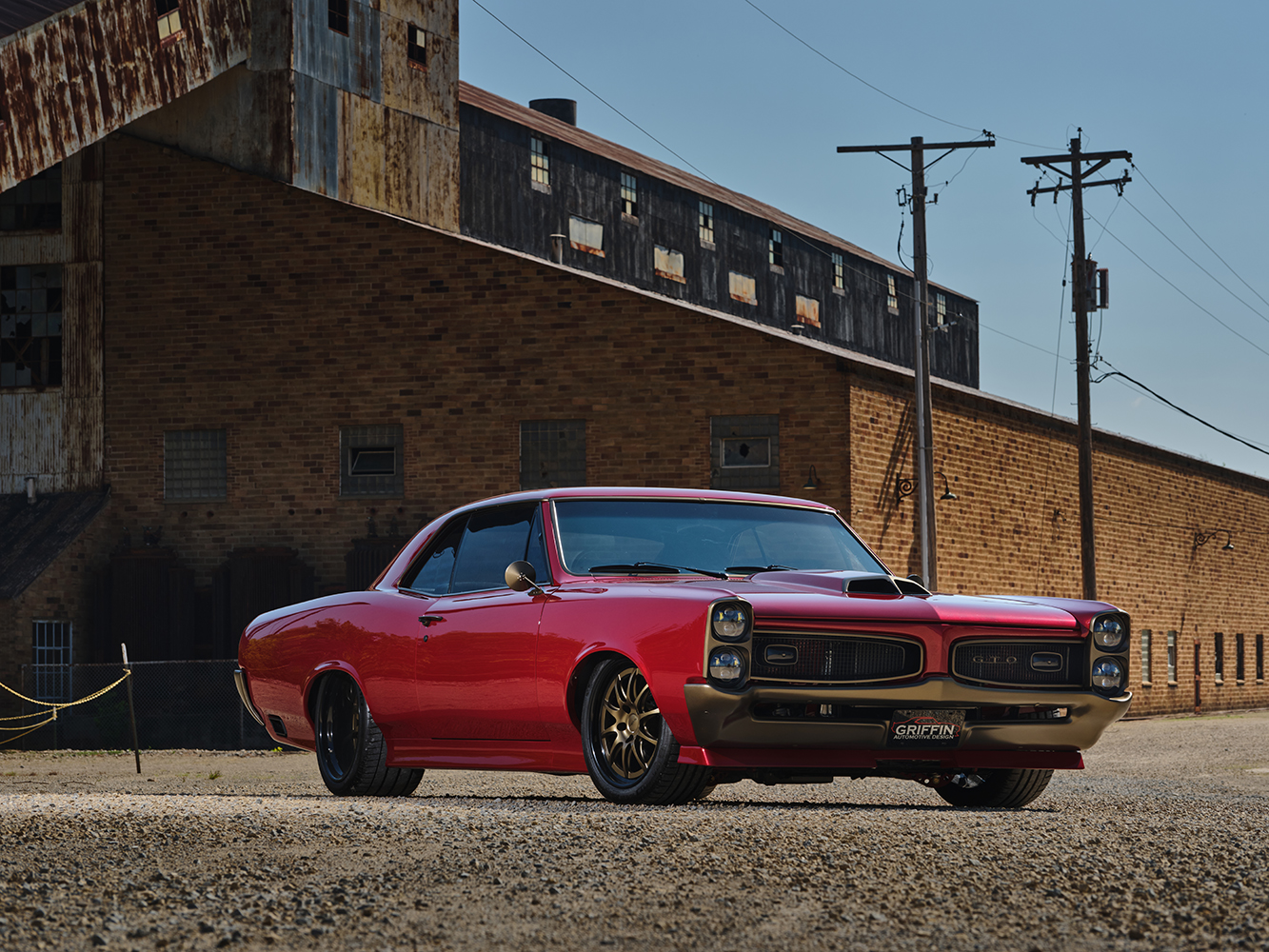 The Pontiac GTO is one of the first true muscle cars, and the 1966 model year, such as Russ’s, is particularly significant for several reasons. The 1966 GTO was marketed as its distinct model rather than merely an option package for the Pontiac Tempest. This change emphasized the GTO’s growing popularity and established it as a key player in the muscle car segment. The 1966 model featured a refined design that maintained its predecessor’s aggressive stance and sporty profile while incorporating modern styling elements. It enhanced visual appeal by introducing a more sculpted body, a split grille, and revised taillights. The 1966 GTO continued to build on its reputation for performance. It came standard with a 389ci V-8 engine producing 335 hp, with optional upgrades. The GTO’s growing popularity in 1966 contributed to the muscle car craze that helped define the genre, influencing other manufacturers to enter the market with their own performance-oriented vehicles. The 1966 GTO was among the best-selling muscle cars of its time. This success reinforced Pontiac’s position in the automotive industry and helped the brand carve out a niche among performance enthusiasts. The 1966 GTO became an automotive icon during the muscle car era, and its legacy continues to resonate. Overall, the 1966 Pontiac GTO is significant not only for its performance and design but also for its role in shaping the landscape of American muscle cars and solidifying Pontiac’s reputation as a producer of high-performance vehicles.
The Pontiac GTO is one of the first true muscle cars, and the 1966 model year, such as Russ’s, is particularly significant for several reasons. The 1966 GTO was marketed as its distinct model rather than merely an option package for the Pontiac Tempest. This change emphasized the GTO’s growing popularity and established it as a key player in the muscle car segment. The 1966 model featured a refined design that maintained its predecessor’s aggressive stance and sporty profile while incorporating modern styling elements. It enhanced visual appeal by introducing a more sculpted body, a split grille, and revised taillights. The 1966 GTO continued to build on its reputation for performance. It came standard with a 389ci V-8 engine producing 335 hp, with optional upgrades. The GTO’s growing popularity in 1966 contributed to the muscle car craze that helped define the genre, influencing other manufacturers to enter the market with their own performance-oriented vehicles. The 1966 GTO was among the best-selling muscle cars of its time. This success reinforced Pontiac’s position in the automotive industry and helped the brand carve out a niche among performance enthusiasts. The 1966 GTO became an automotive icon during the muscle car era, and its legacy continues to resonate. Overall, the 1966 Pontiac GTO is significant not only for its performance and design but also for its role in shaping the landscape of American muscle cars and solidifying Pontiac’s reputation as a producer of high-performance vehicles.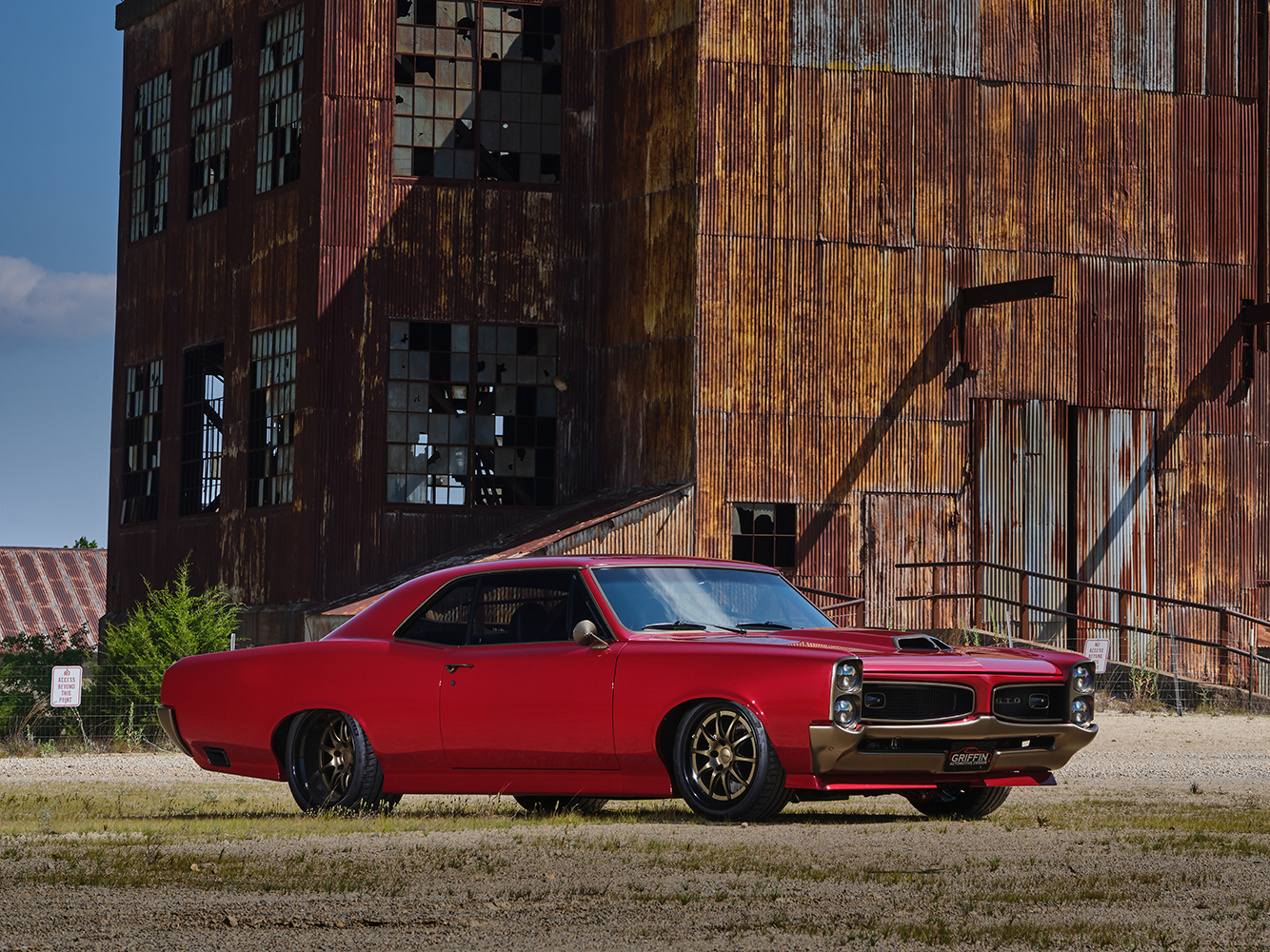 That brings us to why Russ wanted his own GTO. For this story, we went to Russ, who told us about a kid with big dreams.
That brings us to why Russ wanted his own GTO. For this story, we went to Russ, who told us about a kid with big dreams. “As a young boy who grew up in Hillsboro, Missouri, I was always surrounded by friends with ‘cool cars.’ I had always dreamed of owning a different American muscle car. I drove a couple of Camaros and a Monte Carlo as a teenager. I had always longed to drive the greatest of all time, the GTO. I had been looking for some time to purchase an older GTO, and finally, in the summer of 1992, I had enough money to buy one that was in poor condition and had to have it. For only $800, I purchased this car, and I was overjoyed to own this car. I was so excited to drive this car home sitting on a bucket since, at this time, the driver seat was conveniently located in the back seat. ‘What a rush!’ I thought to myself as I drove home, a ride only 5 to 6 miles. I started tearing everything out of the car immediately, hoping to restore it myself.
“As a young boy who grew up in Hillsboro, Missouri, I was always surrounded by friends with ‘cool cars.’ I had always dreamed of owning a different American muscle car. I drove a couple of Camaros and a Monte Carlo as a teenager. I had always longed to drive the greatest of all time, the GTO. I had been looking for some time to purchase an older GTO, and finally, in the summer of 1992, I had enough money to buy one that was in poor condition and had to have it. For only $800, I purchased this car, and I was overjoyed to own this car. I was so excited to drive this car home sitting on a bucket since, at this time, the driver seat was conveniently located in the back seat. ‘What a rush!’ I thought to myself as I drove home, a ride only 5 to 6 miles. I started tearing everything out of the car immediately, hoping to restore it myself.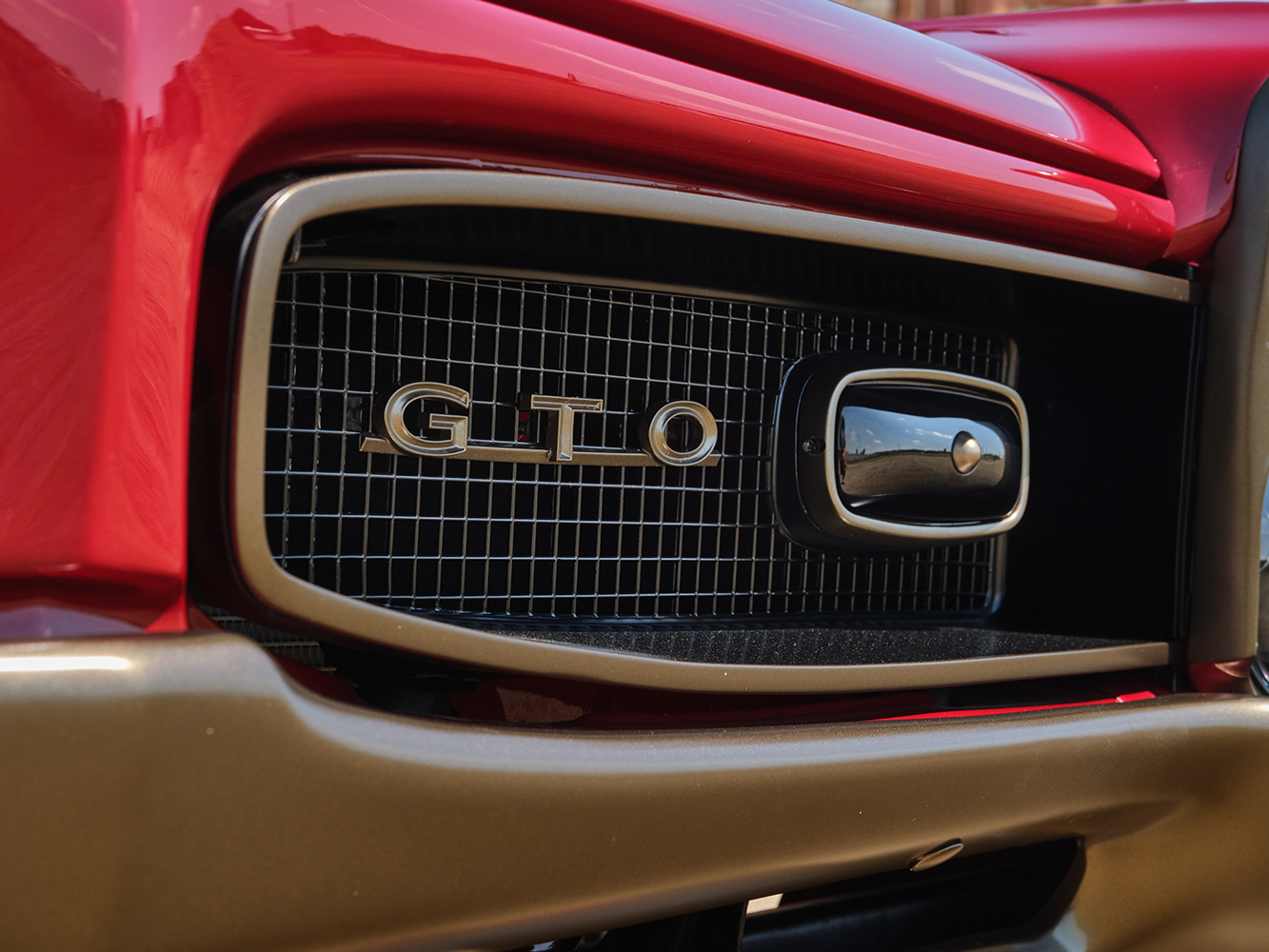 “With very little experience and financial resources available, the restoration project stalled for two years. The car moved back into a field at the back of my parents’ house and sat for quite some time. In 2016, I approached Griffin Automotive Design (GAD) to begin the ultimate restoration plan. My son and I delivered the car in August 2016. The car was reborn after seven years of careful and thoughtful planning.”
“With very little experience and financial resources available, the restoration project stalled for two years. The car moved back into a field at the back of my parents’ house and sat for quite some time. In 2016, I approached Griffin Automotive Design (GAD) to begin the ultimate restoration plan. My son and I delivered the car in August 2016. The car was reborn after seven years of careful and thoughtful planning.”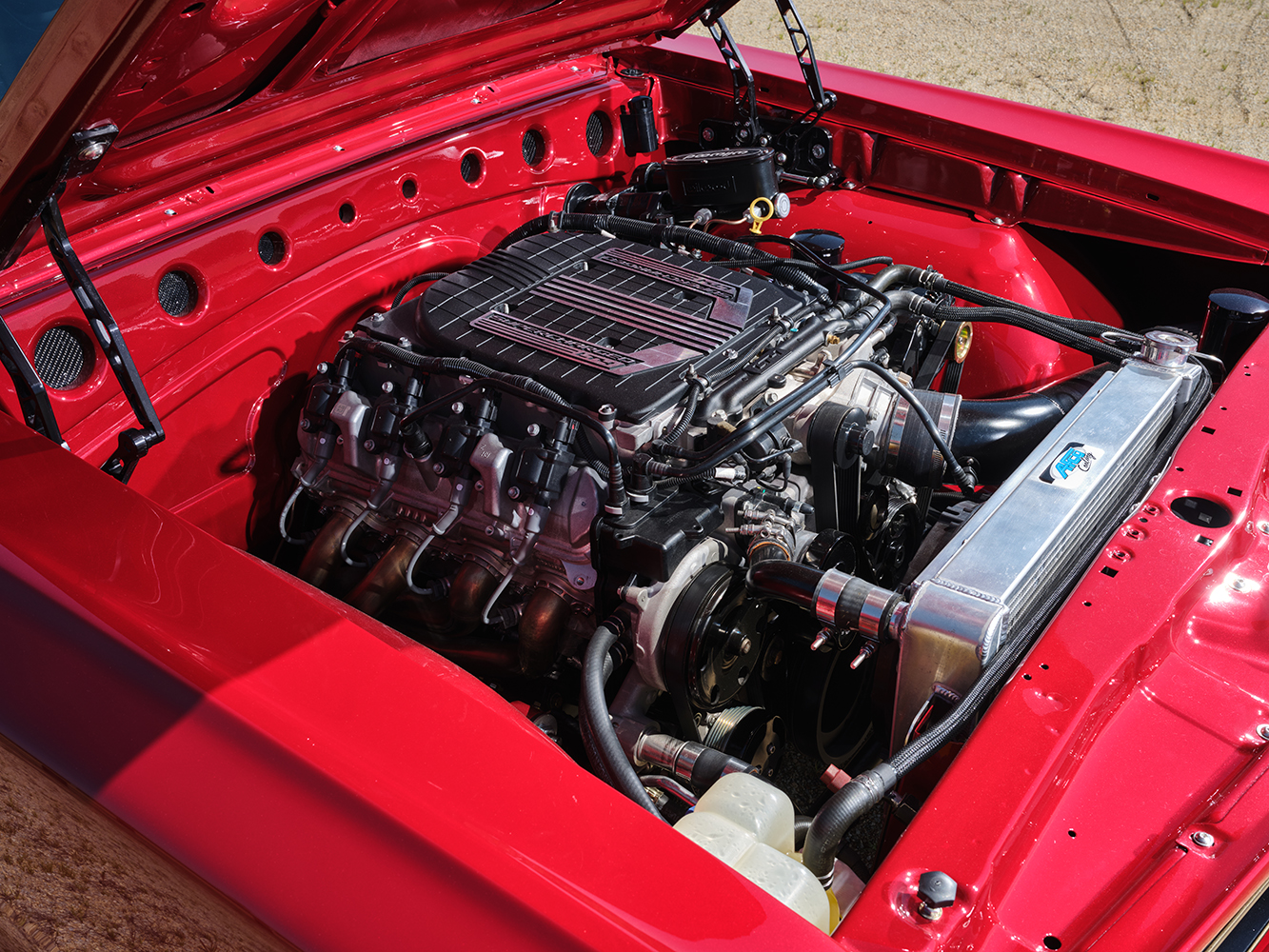 Ostensibly, the 1966 GTO represents all its factory sheetmetal, but there are a handful of purposeful changes. One will immediately realize that the GTO hood looks slightly “different.” That’s because the GTO scoop, which is iconic in its appearance, now features a larger than factory-sized scoop blended into the fabricated all-steel hood. Other changes include the raised wheelwell openings in both the front and the rear that help to accommodate the oversized wheel and tire combination. From here, the rocker and quarter-panels were extended to enhance the appearance. Custom wheeltubs are now 15-1/2 inches wide and fabricated at GAD. Also mounted in the rear quarters are the exhaust openings, leaving the rear of the clean of any exhaust pipes. The body and tail panel area underwent mild reshaping as the stock chrome bumpers, now painted like the trim, were left in stock shape but neatly gapped to the body. All the required body- and paintwork, followed by the custom-mix Axalta Candy Red was accomplished at GAD.
Ostensibly, the 1966 GTO represents all its factory sheetmetal, but there are a handful of purposeful changes. One will immediately realize that the GTO hood looks slightly “different.” That’s because the GTO scoop, which is iconic in its appearance, now features a larger than factory-sized scoop blended into the fabricated all-steel hood. Other changes include the raised wheelwell openings in both the front and the rear that help to accommodate the oversized wheel and tire combination. From here, the rocker and quarter-panels were extended to enhance the appearance. Custom wheeltubs are now 15-1/2 inches wide and fabricated at GAD. Also mounted in the rear quarters are the exhaust openings, leaving the rear of the clean of any exhaust pipes. The body and tail panel area underwent mild reshaping as the stock chrome bumpers, now painted like the trim, were left in stock shape but neatly gapped to the body. All the required body- and paintwork, followed by the custom-mix Axalta Candy Red was accomplished at GAD.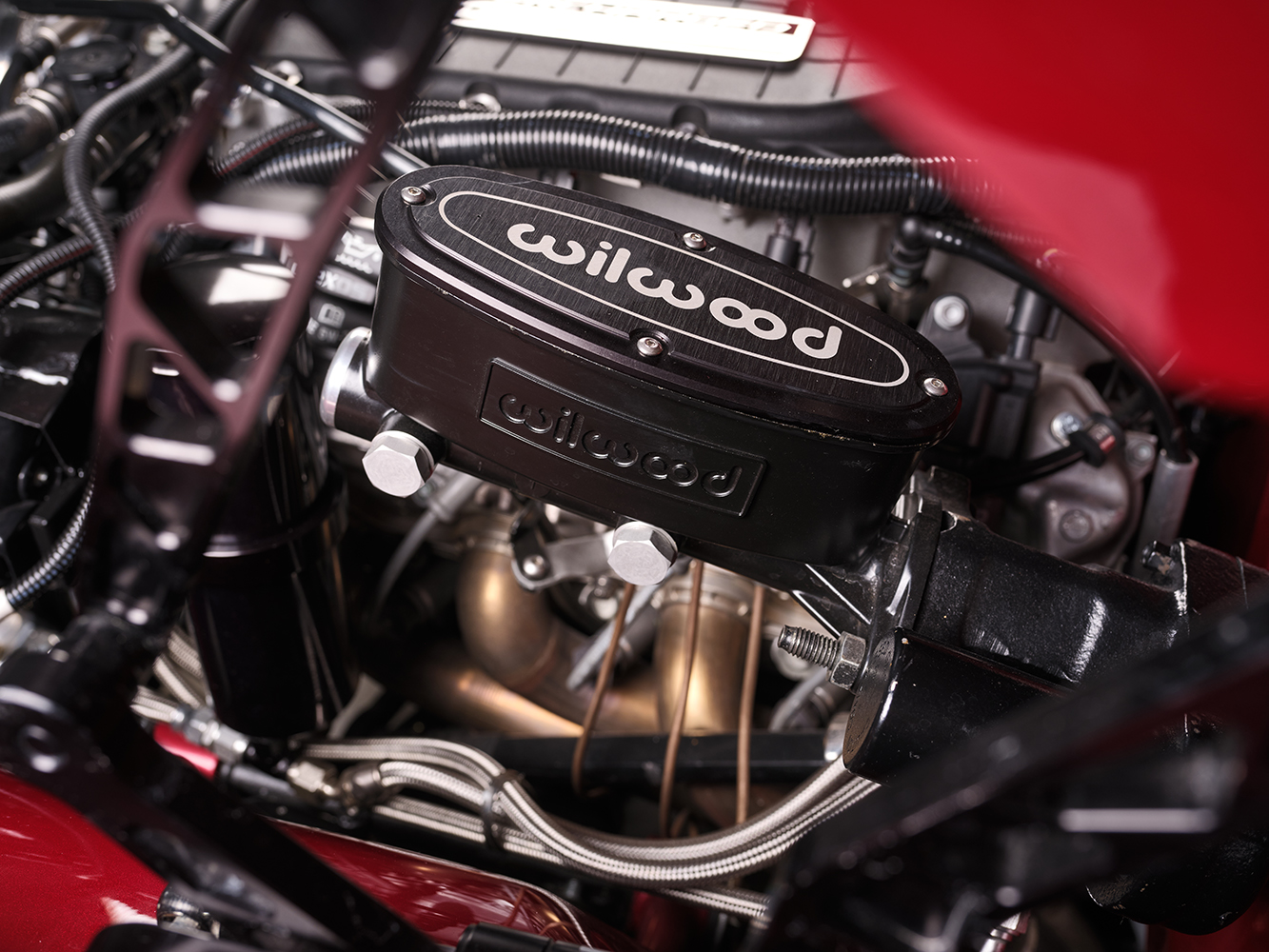 Resting beneath the beautifully handled sheetmetal is a factory frame that has undergone modifications by GAD to accompany modern suspension components. The rear suspension is based on a narrowed Ford 9-inch rear now fitted with 3.73 gears with 31-spline Strange Engineering axles, a pair of Ridetech coilover shocks, and a sway bar, all held in place by a GAD custom-designed and fabricated triangulated four-link. The front IRS is based on the Ridetech system with front spindles, adjustable coilover shocks, a sway bar, and a Performance Steering Components’ (PSC) 12.7:1 ratio quick steering. The brake package is formed around a Wilwood Big Brake system with 14-inch drilled-and-slotted rotors with six-piston calipers in front and four-piston calipers in the rear, all brought into service through a Wilwood power master cylinder. The body and suspension find themselves riding around on a set of Forgeline wheels that measure 18×9.5 in the front and 19×12 in the back and then wrapped with Michelin Pilot Sport 4 wide rubber, measuring 245/40ZR18s and 325/30ZR19s. Specially designed for ideal street performance, the Michelin Pilot Sport 4 is excellent for both dry and wet grip.
Resting beneath the beautifully handled sheetmetal is a factory frame that has undergone modifications by GAD to accompany modern suspension components. The rear suspension is based on a narrowed Ford 9-inch rear now fitted with 3.73 gears with 31-spline Strange Engineering axles, a pair of Ridetech coilover shocks, and a sway bar, all held in place by a GAD custom-designed and fabricated triangulated four-link. The front IRS is based on the Ridetech system with front spindles, adjustable coilover shocks, a sway bar, and a Performance Steering Components’ (PSC) 12.7:1 ratio quick steering. The brake package is formed around a Wilwood Big Brake system with 14-inch drilled-and-slotted rotors with six-piston calipers in front and four-piston calipers in the rear, all brought into service through a Wilwood power master cylinder. The body and suspension find themselves riding around on a set of Forgeline wheels that measure 18×9.5 in the front and 19×12 in the back and then wrapped with Michelin Pilot Sport 4 wide rubber, measuring 245/40ZR18s and 325/30ZR19s. Specially designed for ideal street performance, the Michelin Pilot Sport 4 is excellent for both dry and wet grip.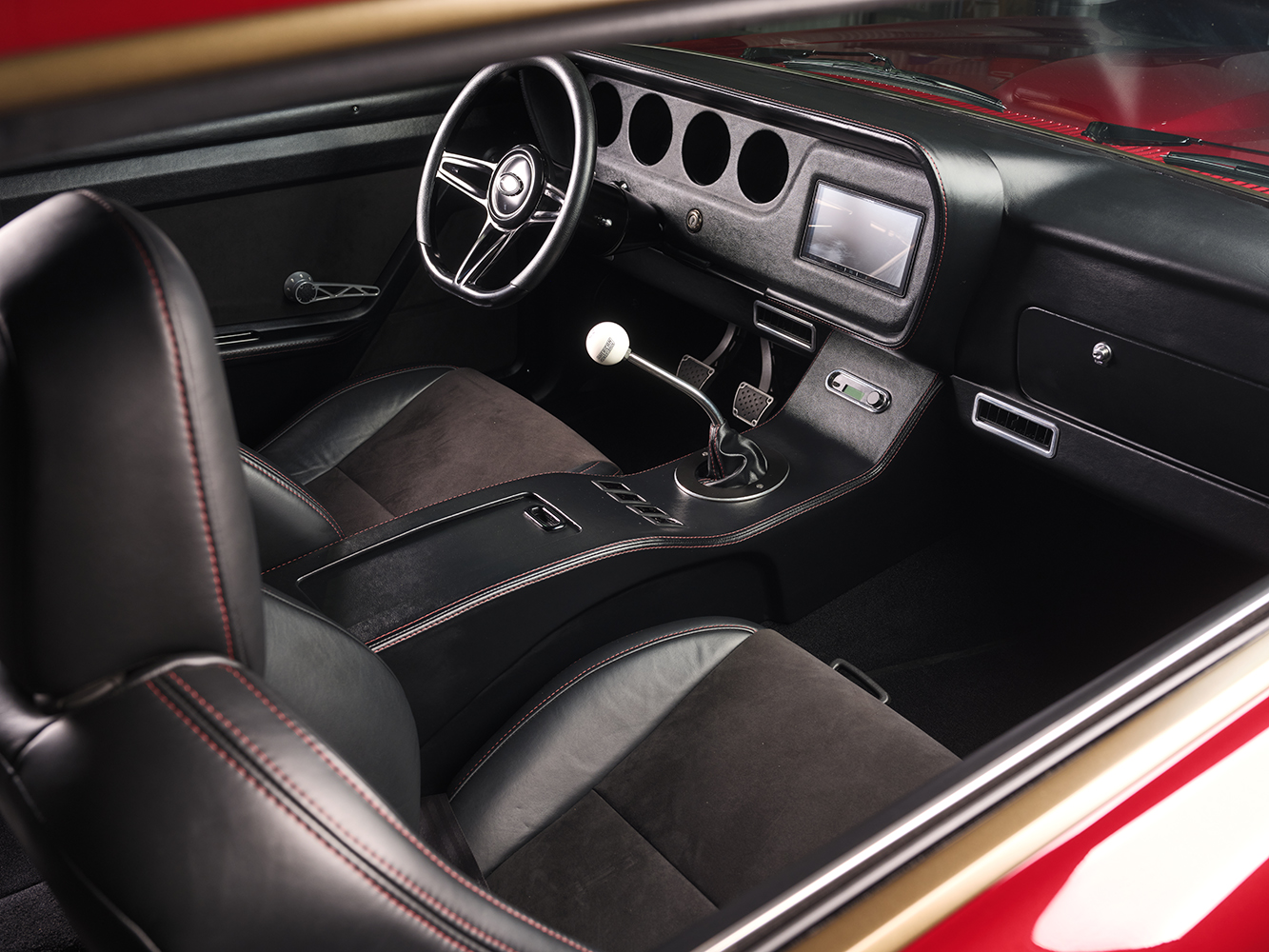 The interior features a redone dashboard wrapped in leather from Relicate, Dakota Digital instruments, and a touch screen audio system with GPS. The center console area now hosts the Vintage Air A/C system, while the air registers are mounted to the bottom of the dashboard. Another dash-mounted accessory is the Flaming River steering column topped with a Billet Specialties leather-wrapped three-spoke wheel. All the required wiring is based on an American Autowire system installed at GAD. The interior is black in its presentation, headliner, carpeting, door panels, all seating, dash, and center console. The handiwork was performed at GAD using Relicate leather on the fifth-gen Camaro front buckets and the custom rear bench/bucket presentation that features Relicate Alcantara insets. (Alcantara is a synthetic textile with a soft, suede-like feel made from a blend of polyester and polyurethane that is durable and long-lasting.)
The interior features a redone dashboard wrapped in leather from Relicate, Dakota Digital instruments, and a touch screen audio system with GPS. The center console area now hosts the Vintage Air A/C system, while the air registers are mounted to the bottom of the dashboard. Another dash-mounted accessory is the Flaming River steering column topped with a Billet Specialties leather-wrapped three-spoke wheel. All the required wiring is based on an American Autowire system installed at GAD. The interior is black in its presentation, headliner, carpeting, door panels, all seating, dash, and center console. The handiwork was performed at GAD using Relicate leather on the fifth-gen Camaro front buckets and the custom rear bench/bucket presentation that features Relicate Alcantara insets. (Alcantara is a synthetic textile with a soft, suede-like feel made from a blend of polyester and polyurethane that is durable and long-lasting.)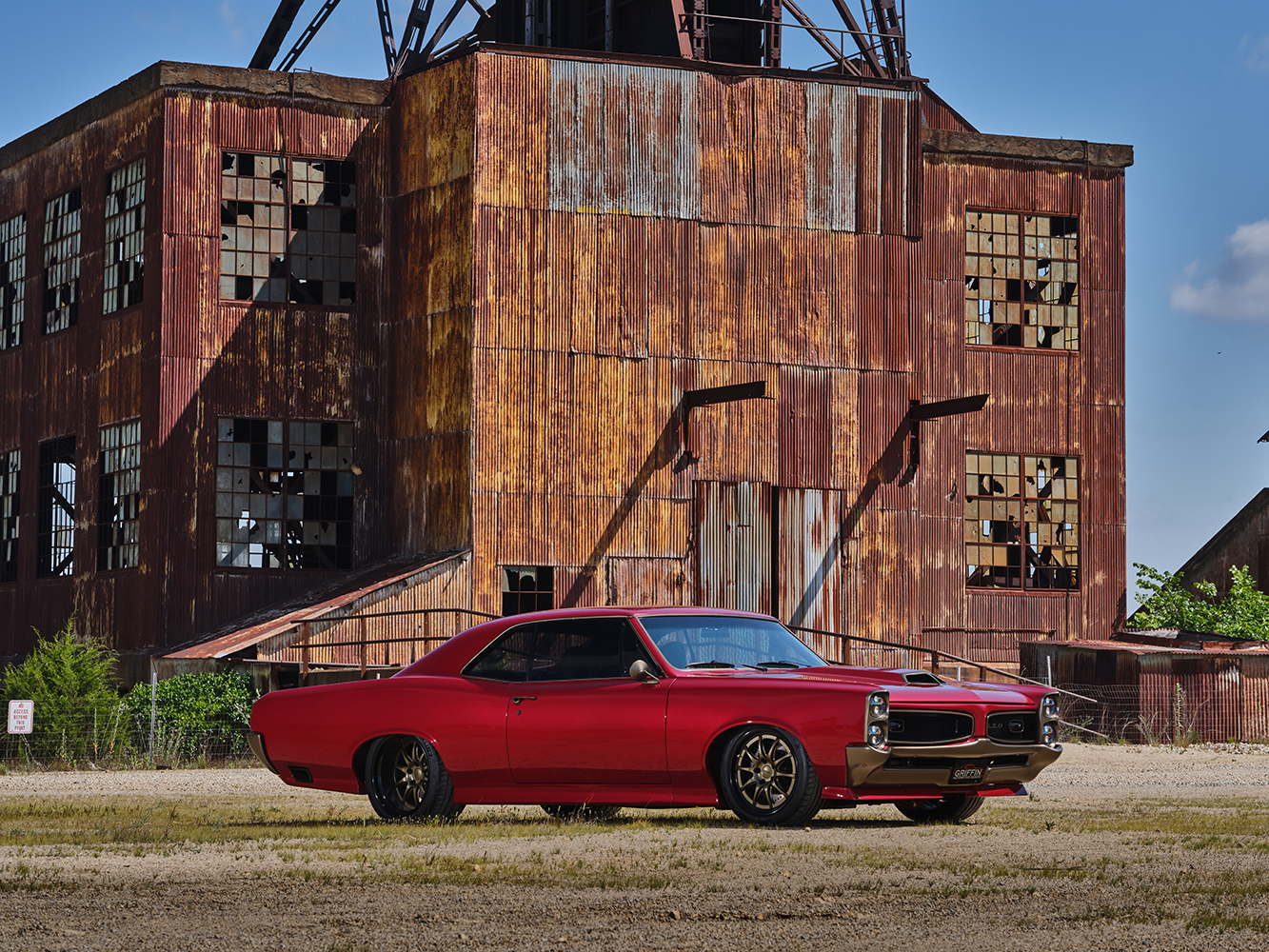 We’ve saved what might be the best for last, but it will surely stir a controversy. Power for this GTO comes from the family, just not Pontiac. It is a GM sister LT4 from Chevrolet Performance. The 6.2L V-8 is supercharged and sports a custom tune by Steve Harrah, who specializes in GM and Holley EFI tuning. The well-tuned crate motor also features a DriveJunky serpentine belt system as well as a set of custom stainless steel 1-3/4-inch headers that flow into the 3-inch stainless exhaust that sandwich the MagnaFlow mufflers. From here, an American Powertrain modified T56 six-speed with a B&M shifter transfers the power to the rear.
We’ve saved what might be the best for last, but it will surely stir a controversy. Power for this GTO comes from the family, just not Pontiac. It is a GM sister LT4 from Chevrolet Performance. The 6.2L V-8 is supercharged and sports a custom tune by Steve Harrah, who specializes in GM and Holley EFI tuning. The well-tuned crate motor also features a DriveJunky serpentine belt system as well as a set of custom stainless steel 1-3/4-inch headers that flow into the 3-inch stainless exhaust that sandwich the MagnaFlow mufflers. From here, an American Powertrain modified T56 six-speed with a B&M shifter transfers the power to the rear.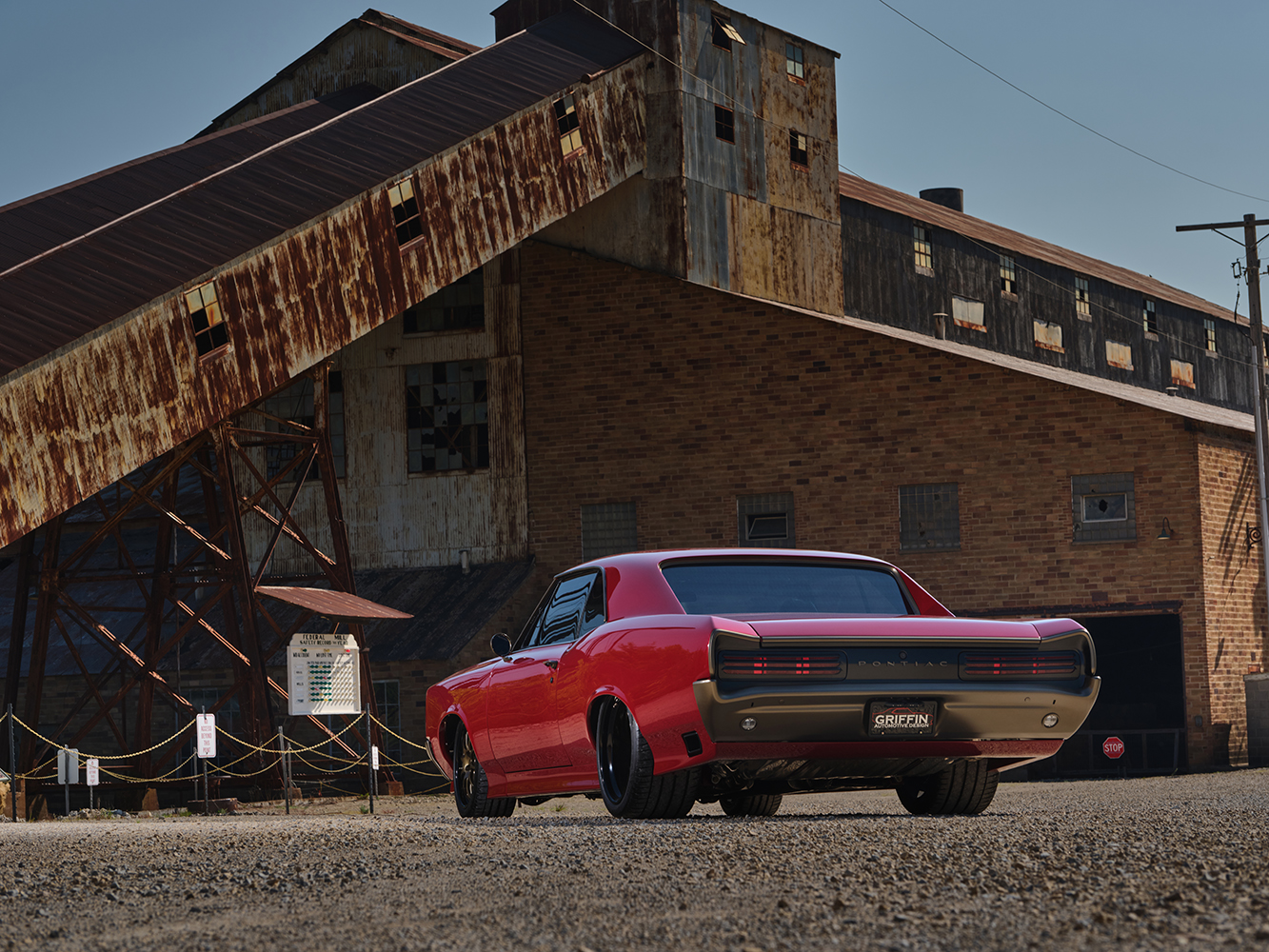 We can’t think of a better way to cruise to a Saturday morning coffee and doughnut gathering or a long trip down the highway than this 1966 Pontiac GTO. There is no denying that this represents the best of the muscle car era, as well as what is happening today with modern hot rods.
We can’t think of a better way to cruise to a Saturday morning coffee and doughnut gathering or a long trip down the highway than this 1966 Pontiac GTO. There is no denying that this represents the best of the muscle car era, as well as what is happening today with modern hot rods.
Check out this story in our digital edition here.
MR











